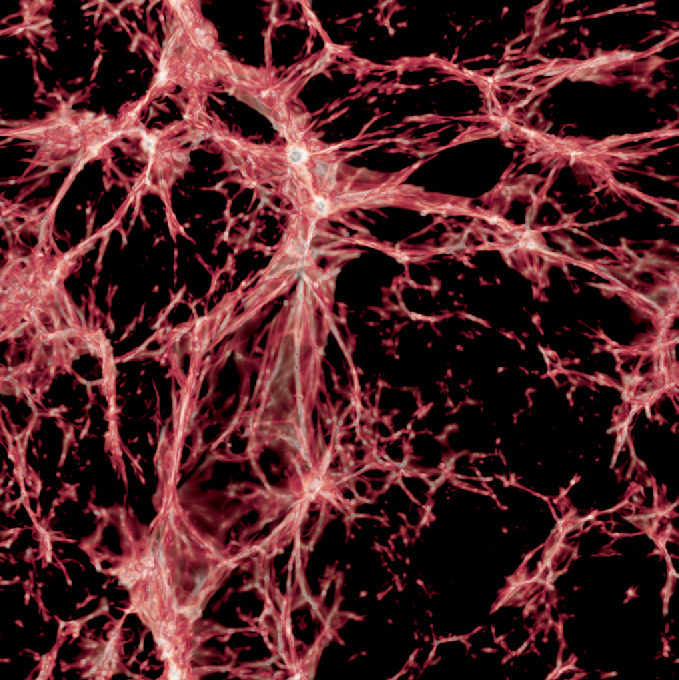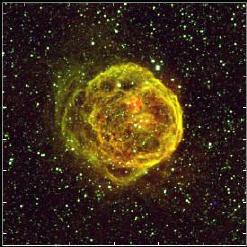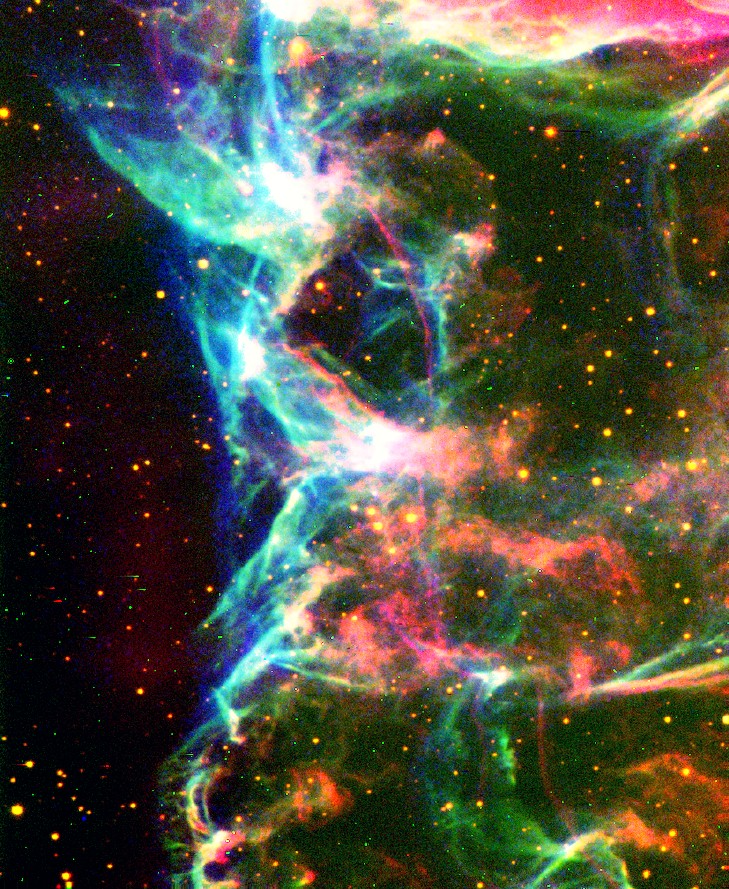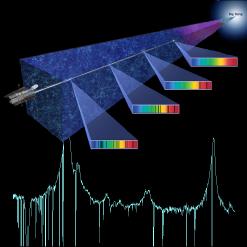Intergalactic and Circumgalactic Medium
 A simulation of the Cosmic Web. Galaxies and gas lie along huge filaments. Clusters of galaxies lie at the nodes in the web while huge voides make up the underdense space between. |
The main focus of my research is the local intergalactic medium, the diffuse, "dark" gas which lies between galaxies and is thought to form a filamentary, web-like structure known as the Cosmic Web. This is an area of astrophysics which remains poorly understood and poorly connected to many other parts of the larger cosmological theory yet makes up most of the mass and volume of normal, baryonic matter in the universe and plays a crucial part in the formation of stars and galaxies.
The cosmic web should follow the same large-scale framework laid down through gravitational collapse of dark matter halos. The IGM should provide the raw materials for new star formation in galaxies and should itself be enriched by heavy elements created in those stars. The IGM is heated by supernovae, stellar winds, and active galaxies and is ionized by energetic ultraviolet and X-ray radiation from galaxies. However, the extent of these interactions are poorly observed at best.
The cosmic web should follow the same large-scale framework laid down through gravitational collapse of dark matter halos. The IGM should provide the raw materials for new star formation in galaxies and should itself be enriched by heavy elements created in those stars. The IGM is heated by supernovae, stellar winds, and active galaxies and is ionized by energetic ultraviolet and X-ray radiation from galaxies. However, the extent of these interactions are poorly observed at best.
- Best statistical study of cool, photoionized gas (the Lyman-alpha forest), and warm-hot, metal-enriched gas.
- Evolution of the IGM during the second half of the universe.
- Accounting for more than half of the baryons (normal matter made up of protons/neutrons) in the modern universe.
- Detailed studies of the relationship between galaxies and their surrounding IGM.
Active Galactic Nuclei
 |
My particular interest is in blazars and Fanaroff-Riley class 1 and 2 galaxies, a class of extremely energetic AGN consisting of a rapidly spinning black hole with little or no gas accretion. They produce extremely powerful, relativistic radio jets and photons of all energies from radio waves all the way to TeV-scale gamma rays. I'm also interested in time variability of AGN and in the properties of gas flowing into and out of their host galaxies. Here are some highlights:
- Detection of weak Lya emission features in spectra of "featureless" BL Lacertae Objects (a subclass of blazars). We used this to constrain the mass accretion rate and other circumnuclear properties.
- Direct redshift measurement for several blazars which turn out to be at much larger distances than had been assumed. These large distances pose a problem for the "gamma-ray horizon" and current models of the extragalactic background light.
Interstellar Medium
 The superbubble N70 in the Large Magellanic Cloud shows an excess of hot OVI absorption compared to nearby field sight lines. Do objects such as this produce the hot gas in a galaxies halo? |
 The XA region of the Cygnus Loop supernova remnant is a complex region of face-on radiative and non-radiative shocks. |
Since the completion of my thesis, I have been investigating subsets of the Magellanic Cloud dataset. Theory suggests that superbubbles are reservoirs of hot gas which help to produce and maintain the hot halo surrounding galaxies. Thus I have been examining sight lines toward stars in superbubbles, such as the spectacular N70 at left, in comparison with nearby "field" sight lines. Preliminary evidence suggests that there is a correlation between superbubbles and extra OVI absorption, but a larger study of additional objects is necessary.
